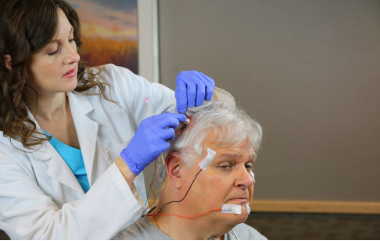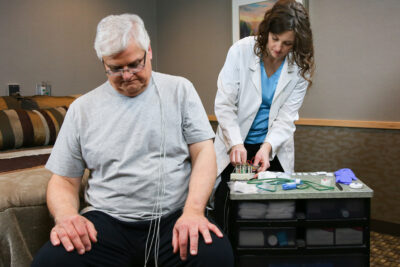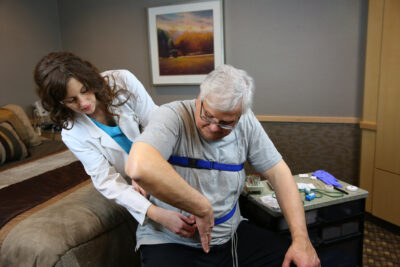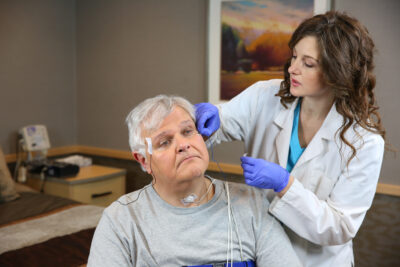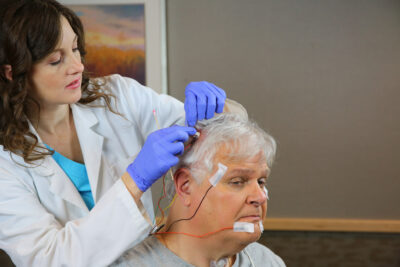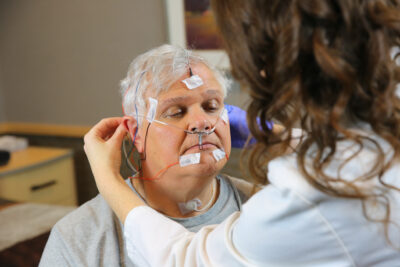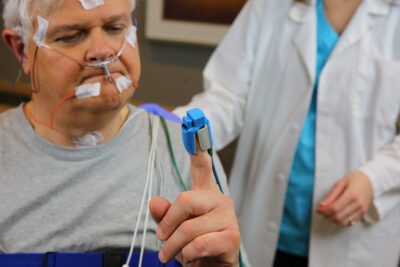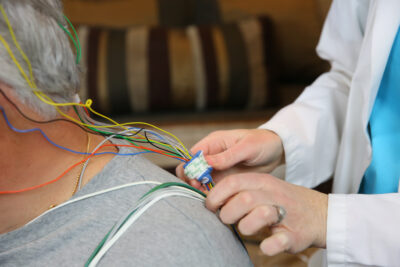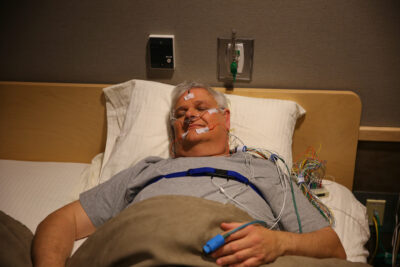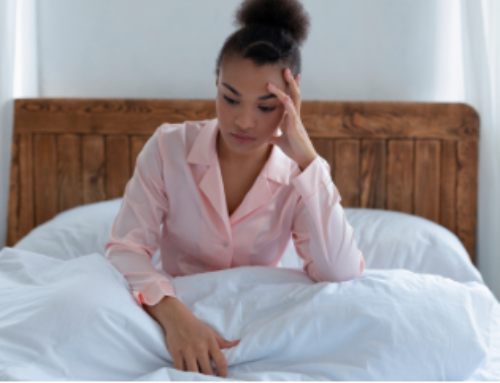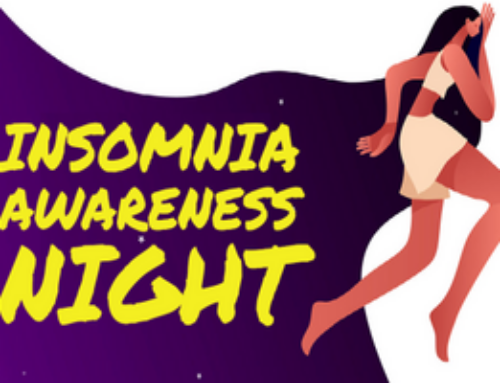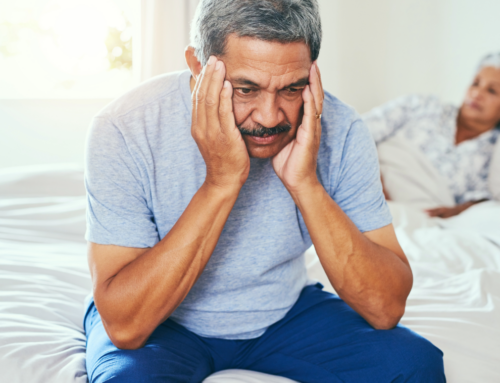A sleep study, also known as polysomnography, monitors your breathing, heart rate, body movements and brain waves while you sleep. This is performed in a specialized setting with a trained sleep technologist who is monitoring all of these aspects while ensuring your safety and comfort.
Your doctor performs a thorough assessment of your sleep complaints and if they feel further testing is required, orders a sleep study. This helps to correctly diagnose sleep disorders that you might have.
On the day of the study, you will be asked to arrive at the sleep center in the evening with the intention of sleeping there overnight. Get tips for preparing for a sleep study, including what to do during the day and what to bring for your overnight stay.
The initial part of the procedure involves the technologist attaching wires using special glue to your head, chin, chest and legs. In addition, they will have you wear soft bands on your chest and abdomen as well an oxygen monitor on your finger. Some centers may use a microphone to measure snoring and have additional audio/video recording equipment.
You will then be allowed to fall asleep while the technologist monitors your sleep parameters on a computer. In case you encounter difficulty falling asleep, medication may be used to help. Depending on the type of study ordered by your doctor, the technologist may put on a mask that goes over your mouth and/or nose and delivers pressurized air to provide treatment.
The technologist may wake you up in the middle of the night to ask you to change your body position or to replace wires if they come loose. After you wake up in the morning, the technologist will help remove the wires and monitors. The measurements from the study are reviewed by a board-certified sleep medicine physician who will make a diagnosis based on this data.
Here are answers to 10 common questions about sleep studies.
Frequently asked questions
1. Is the test painful?
The test is not painful, but being attached to the wires may be uncomfortable for some people. The technologist may ask you to try to sleep on your back during the study. Please inform the technologist if you think you will not be able to do this.
2. What if I can’t fall asleep?
Most people do not have difficulty sleeping during the study. If you do, medication may be used for the study. Even if it doesn’t keep you asleep the entire time, it may allow a sufficient amount of sleep to make a diagnosis.
3. Is a family member or friend allowed to stay with me?
Usually, they are able to accompany you to the study but not stay overnight.
4. Will I be able to use the restroom during the study?
You can use the restroom in the center; the technologist will help unhook the wires that are all connected to one port.
5. Should I bring my nighttime medications with me?
Yes, be sure to bring any medications that you take at bedtime. Please let the technologist know before you take them.
6. Can I sleep in a recliner?
Generally, it is required for you to try to sleep in the bed. Sleeping in an elevated position may affect the results of the study.
7. Can I have the television on?
Many sleep centers do not have televisions. If there is one in the sleep room, you will be required to turn it off before bedtime. This is because the television might interfere with the sleep recordings and interrupt the study. Cell phones and other electronic devices will also need to be turned off to minimize the chance of you waking up during the study.
8. Is the bed comfortable?
Most patients find the bed comfortable. Some labs have memory foam beds or hospital beds available, depending on the needs of the patient.
9. What if I can’t tolerate the mask?
If changing the type of mask or making other adjustments does not work, the study may be continued without the mask.
10. How will I know the results of the test?
You will schedule a follow-up appointment with your doctor to discuss the results of the test.

